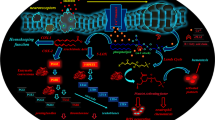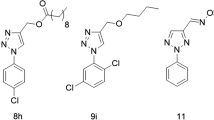Abstract.
Objective: We examined the effects of ML3000 and several non-steroidal antiinflammatory drugs (NSAIDs) on the synthesis of products of 5-LOX (LTB4, LTC4) and COX-1/2 (TXB2, PGE2) in vitro and ex vivo in order to further elucidate the mechanism of action of ML3000.¶Methods and results: Using a human whole blood assay the effect of ML3000 on the shunt of arachidonic acid to the lipoxygenase pathway when COX is blocked was studied. ML3000 (0.3, 1, 3, 10, 30 μg/ml) and indomethacin (0.3, 1, 3, 10, 30 μg/ml) concentration-dependently inhibited the synthesis of PGE2 (IC50 = 3.9 and 4.5 μM). In contrast to ML3000, indomethacin produced an increase of LTC4 of up to 155.5% of control. 5-lipoxygenase inhibition was further tested in a basophilic leukemia cell assay using RBL-1 cells. ML3000 (1-10 μM) inhibited the synthesis of LTB4 in a concentration related manner (IC50: 3.6 μM). In carrageenan induced rat paw edema, ML3000 and indomethacin completely blocked the formation of PGE2 in the inflamed tissue. The LTB4 production in the inflamed paw was reduced to basal levels by ML3000 (10 ± 1.4 pg/paw saline control and 7.5 ± 1.3 - 5.9 ± 3.2 pg/paw ML3000), whereas LTB4 levels remained markedly elevated as compared to saline control by indomethacin (30.7 pg/paw). 5-LOX inhibition in the inflamed rat colon was investigated by measuring LTB4 synthesis. MK-886 and ML3000 at 10 mg/kg p.o. reduced LTB4 production to 29.8 ± 4.9 and 30.1 ± 2.8 pg/mg tissue as compared to control (54.2 ± 7.4 mg/kg tissue). LTB4 levels in the rat stomach were comparable to control (2.5 ± 0.4 pg/ mg protein) after oral administration of ML3000 (10, 30, 100 mg/kg), whereas oral treatment with indomethacin (0.3, 1, 3 mg/kg) or diclofenac (1, 3 mg/kg) increased LTB4 up to 9.2 ± 2.3 or 8.9 ± 1.6 pg/mg protein. This effect was significant at 1 mg/kg diclofenac and 0.3 mg/kg indomethacin.¶Conclusions: These results provide further evidence, that ML3000 inhibits 5-LOX as well as COX-1 and COX-2 in vitro and in animal experiments. The favourable gastrointestinal (GI) tolerability of the compound is believed to be linked to the mechanism of combined 5-LOX and COX-1/2 inhibition of ML3000.
Similar content being viewed by others
Author information
Authors and Affiliations
Additional information
Received 28 August 2001; returned for revision 1 October 2001; accepted by G. Geisslinger 19 November 2001
Rights and permissions
About this article
Cite this article
Tries, S., Neupert, W. & Laufer, S. The mechanism of action of the new antiinflammatory compound ML3000: inhibition of 5-LOX and COX-1/2. Inflamm. res. 51, 135–143 (2002). https://doi.org/10.1007/PL00000285
Issue Date:
DOI: https://doi.org/10.1007/PL00000285




